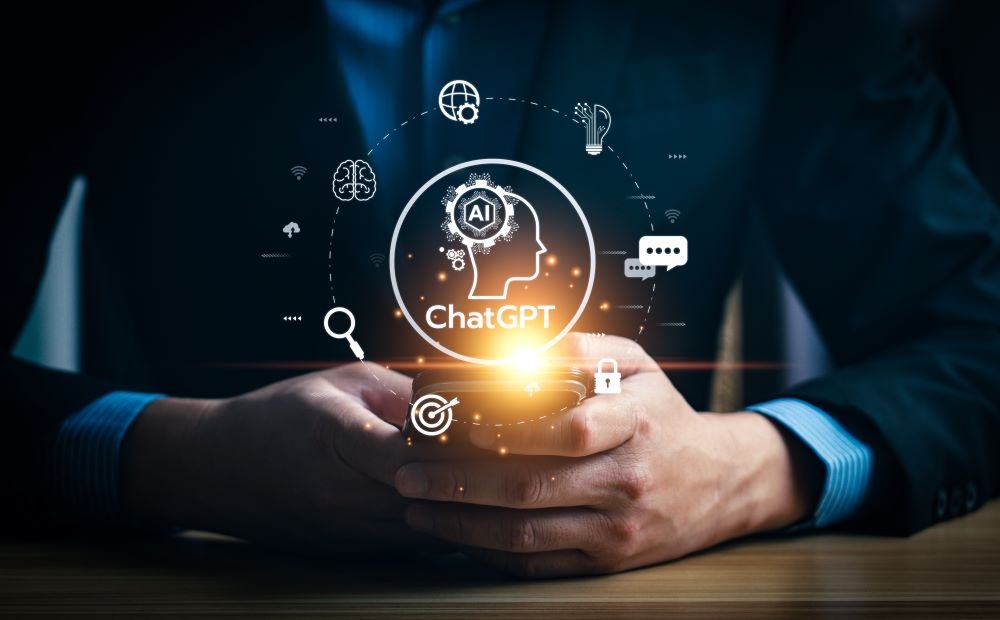ChatGPT and Other Generative AI Considerations for Healthcare Simulation
ChatGPT and other generative AI tools have serious potential to impact Healthcare Simulation. Recently the headlines have been touting some advances in generative Artificial Intelligence (AI), ChatGPT and Bard, which are two competing brands of this technology. For those less familiar, ChatGPT and Bard are AI chatbots. ChatGPT is created by Open AI and Bard is Google’s equivalent. ChatGPT has been out since November of 2022, while Bard was just released in March 2023. Already these technological wonders are making headlines and quickly ‘learning’ and changing; ChatGPT 4 has just launched. With this version, the developers tested its ability to take standardized tests (the SAT, a number of AP history exams, the BAR, and several others); spoiler alert ChatGPT did pretty darn well on these exams, better than 85% of humans in some cases. AI’s performance on these exams leads one to wonder how ChatGPT would perform on the CHSE or CHSOS exams? This HealthySimulation.com article by Dr. Jill Sanko will explore ChatGPT in the context of healthcare simulation. (Editor’s Note: Are you utilizing ChatGPT or other AI systems in interesting ways with Healthcare Simulation? Email us, we want to know!)
The immediate past president of the Society for Simulation in Healthcare, Dr. Haru Okuda, demonstrated some of ChatGPT’s ability when he opened the International Meeting on Simulation in Healthcare 2023 with a short welcome speech ‘written’ by the Chatbot. Dr. Okuda did not rely on the Chatbot solely, but rather used the speech as a catalyst to speak about leveraging technology, something all simulationists do daily. All of these recent headlines, Dr. Okuda’s demonstration, and others’ recent obsession with ChatGPT leads one to think, “What do I need to know and how can I use generative AI in my work of healthcare simulation? As an educator, the obvious is, one will need to know when ChatGPT or other similar products are used. Although somewhat challenging to detect when used a recent study notes there are now tools to help you detect the use of AI generated Chatbots. Additionally, educators should be knowledgeable about how ChatGPT can be used and where AI generated technology are most successfully used. There is a strong likelihood students are already a few steps ahead on incorporating ChatGPT into scholarly work.
Research has shown over half of people cannot tell the difference between something written by a human or ChatGPT. Certainly one is tempted to use ChatGPT to write on a topic without much work or effort, especially for Generation Z who leverage technology to navigate the world and have already embraced ChatGPT as a homework helper. One source states that as many as 42% of learners have used ChatGPT to aid in school work. The reality of AI generated material requires educators to know how to work with the technology that students are apt to use rather than to prevent the use. This is not to say that an educator will be accepting dissertations written by generative AI, but one needs to begin to think about how this tool could be used as an effective teaching adjunct. Many organizations have responded to AI and offered opportunities for faculty to learn and have input. I have already attended one session, and signed up for a second, and have applied to be a member of an advisory board on generative AI’s role in higher education.
Sponsored Content:
Feedback augmented by generative AI might be a useful way for educators to incorporate generative AI. ChatGPT allows any prompt to be used to request a particular tone, style or comprehensive level be used to write. An educator can learn to embrace generative AI as a tool for use to produce more direct language tailored to a population of students. In this way, generative AI could be used to bridge the communication differences that plague education related to generational dissimilarities in communication and ensure that messages are presented in a way that is most well received and heard.
Author’s Personal Experience with ChatGPT
As a simulation educator, I started to think about how generative AI could be used in this space. One of the immediate thoughts was for scenario creation. These time consuming necessities of the job consume precious time that could be used putting learners through simulations. Afterall, in many ways scenarios are pulling together information from a variety of sources to create a realistic learning platform and story line. So I thought, what if ChatGPT could be used to write scenarios that are then vetted and checked by experts and tested in a dry run prior to using them in an educational setting? This could allow for a number of novel scenarios to be created quickly to ensure variety and consistency in scenarios. I set out to test this idea.
Since I just got access to Bard, my experimentation was all done using ChatGPT. I learned that you need to tweak and narrow your prompts to get exactly what you are after, but really ChatGPT did a remarkable job writing a few scenarios. On the first attempt I asked ChatGPT to write a scenario depicting a pediatric asthmatic patient. From this I got a very good starting scenario including debriefing points, critical actions for learners, a patient background, and a medication list.
Sponsored Content:
Next, I tweaked the prompt and asked to include a pre-briefing. ChatGPT again reproduced an appropriate scenario, this time including more in the way of pre-briefing. Finally, I asked to use the advocacy- inquiry method for debriefing. ChatGPT did not do well at this task, but I really did not expect generative AI to be successful in doing this final task. All of this took about 15 minutes of time. At the end I had a pretty solid scenario that with a bit more framing, polishing, and review would be ready to test in a dry run.
This experiment demonstrated the utility of generative AI as a tool in the simulation space. I have since even thought about ways to use generative AI in student assignments. I am thinking that using this might be a great way to excite students and create new ways for students to critically think through problems alongside technology rather than in the void of technology. I do not want to see a time when technology will take over for human thinking, but I do see ways technology can augment the way we think and process information. What better way to teach the next generation to use and build technology than to incorporate generative AI as part of their education.
Things to Know About ChatGPT
- There are subscriptions to use all the features of ChatGPT. Subscriptions are not too expensive, but do enhance what one is able to do. Right now one can use Bard for free, but it is assumed this platform will have fees or some sort of subscription as well.
- Platforms are not always accessible, during a recent login attempt to ChatGPT, the message “we are at capacity” was received. This has not occurred with Bard yet.
- There is a wait list currently to become a ChatGPT subscriber.
- The platform is still buggy which resulted in the loss of all work created, including previous prompts and outputs. Do not use ChatGPT as a way to store data that needs later retrieval.
- Generative AI is likely to change so quickly that most will be in a near constant learning curve. The updates required for changes will require users to update the systems and software frequently.
- There are ways to tell that ChatGPT wrote something; if an education already uses Turnitin, executives there say their platform can detect ChatGPT. One can assume these detection services/software will be able to do the same with Bard.
Generative AI will change the way humans live, work, teach, and simulate. The question is, how will society mold this technology to benefit humankind and education or allow technology to rule efforts and undercut the human ability to problem solve? The only way to embrace generative AI is to use the technology, and get creative! In case one is wondering, this article is entirely human written. Simulationists might be the most ready group to embrace generative AI, given how simulation uses surrogate patients to teach and use simulation to integrate the non-human for the benefit of humans. Really, generative AI is just part of the evolution of real life augmented by technology that enhances lives. Ray Kurzweil may have gotten things pretty close to correct… “Artificial intelligence will reach human levels by around 2029. Experts suggest that by 2045, the world will have multiplied the intelligence, the human biological machine intelligence of our civilization a billion-fold.”
As a final example worth considering, a publication stated in April of 2023 that the newest version of ChatGPT passed the US medical licensing examination.
Try Using ChatGPT Generative Artificial Intelligence
Jill Sanko is an award-winning PhD-prepared nurse scientist. She began her research career as a research nurse at the National Institutes of Health (NIH). During her almost decade of service at NIH, she worked in several capacities including as support research staff and as an associate principal investigator. She was also integral in establishing the NIH Clinical Center’s simulation and patient safety program. In 2008 she moved back to Miami where she joined the University of Miami first at the Center for Patient Safety and later at the School of Nursing and Health Studies where she continued teaching and researching the impacts of simulation-based education on patient safety.
With over 40 publications in these areas and numerous national and international presentations she has helped to build the body of knowledge in using simulation as a technology to improve patient safety and has been recognized for these efforts including authoring two Articles of Influence, induction into the Academy for the Society for Simulation in Healthcare, recognition as an INACSL -Frontline Simulation Champion, and a Breakthrough Learning Hero of Healthcare Simulation. Currently, she is a contributing faculty member at Walden University and an Adjunct Associate Professor at MGH-IHP.
Sponsored Content:






















